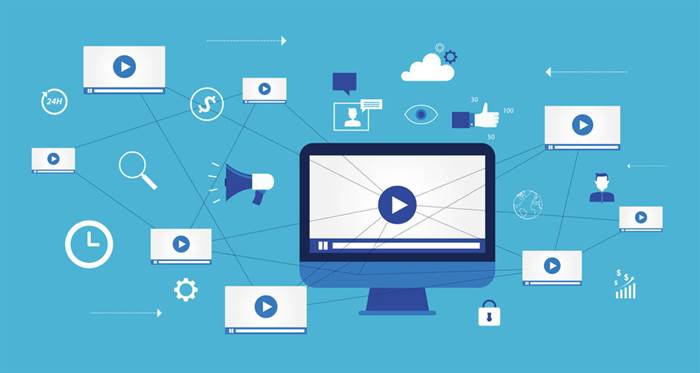Содержание
IaaS is where you pay an upfront fee for access to servers that run on your behalf. PaaS lets you develop applications without having to buy or maintain any yourself. Cloud computing is a way of using the Internet to store, manage and process data. It allows users to store and access information from any location or device.
As cloud adoption is becoming more and more popular, many businesses are paying even more attention to on-premise vs cloud to understand which one is the right choice for them. You can easily create large, complex applications without downloading the related infrastructure. Because data is stored on external servers, there’s a risk of a security breach, resulting in financial losses. SaaS tools may not integrate with the apps and services that you already use.

It aims to protect an application or data from service disruption, a natural or human disaster at one location, by enabling a full cloud recovery. Many companies are interested in DRaaS, although feedback analysis states that it is still challenging to use. DRaaS may be used as a standalone service as an addition to an existing data protection strategy.
Before building iPaaS integrations, non-IT employees need careful training on the data compliance for your industry. They also need to understand how to safeguard payment card information. These include , personally identifiable information , personal health information , and more. Users need ironclad procedures for using iPaaS technology to prevent the risk of human error and accidental data exposure. An IoT network can involve millions of IoT endpoints and massive inflows of real-time data.
Infrastructure As A Service Iaas Defined
In the case of PaaS, the customer receives pre-installed and configured software to develop and can immediately test or deploy the projects. This all sounds great, however, there are some downsides to opting for a private PaaS solution. Here customers have to secure, manage, and maintain physical servers, which is a big price to pay for avoiding the public cloud.

MS Azure is a robust SaaS cloud solution with many integration options for other Microsoft products, including Windows and Linux support. As a result, Azure is a strong candidate for small and large companies, especially as a hosting solution for SAP systems. Although cloud computing is easy to access, customization and scaling may not meet your needs. Comes with Azure Synapse Analytics, an analytics service that includes data integration, enterprise data warehousing, and big data analytics.
Experience The Power Of Ipaas With Dreamfactory
You cannot plan your budget correctly as with traditional bare metal servers where you always pay for the available resources. Sometimes also known as Hardware as a service, entails the interaction of physical resources and virtualization. Also, IaaS enables scalability without the necessity of keeping control over the hypervisors or containers.
- Most of the SaaS require stable internet connection for good working experience.
- As you trust these data to a third-party provider who manages your cloud and you cannot track the access, sometimes you may not even know that a security breach happened.
- But hosting an application or storing data in the cloud is generally tied to high uptime – which is certainly an appeal of the cloud.
- CaaS is a cloud service model created to let customers deploy and manage applications through container-based abstraction using data centers or the cloud.
- You have no control over the cloud-based infrastructure that the application runs on.
- There is no doubt that when two different solutions integrate with each other, some difficulties and contradictions may arise.
When we refer to “the cloud”, we’re talking about the whole infrastructure of machinery, servers and networking that provide these services. Since the vendor controls and operates the SaaS service, customers depend on vendors to maintain the service’s security and performance. Insufficient data security is what you should think in advance while choosing the right approach because you will entrust a third-party provider with sensitive information.
OpenPaaS is a cloud-based social platform that aims to encourage collaboration and teamwork with a cloud framework. It provides real-time collaboration services like document editing, advanced video conferencing solutions, and business process modelling. The PaaS cloud service model can be applied across a diverse range of business functions, namely those involved in developing and deploying user-friendly applications. Here are some of the main applications that can help businesses and organisations. Cloud-based network infrastructures offer several advantages over traditional on-premises infrastructures, but there’s still the matter of deciding between PaaS vs. SaaS vs. IaaS vs. DaaS. The decision will ultimately be based on the size and type of organization you are a part of and what problems you need to solve.
Azure services are all subject to data transfer fees that are often the cause of stacked hidden fees. This is not unique to Azure as all of the large cloud services like AWS and Google do this same gouging of their customer base. This separate fee for in and out data can prove quite costly for large companies, so you should be aware of this to avoid any surprises.
Cloud Service Models
PaaS platform comes with pre-coded applications, which are already installed in the tools of your preference. There are also discounts provided based on the volume of services used. Now that we have outlined the solutions in broad strokes let’s dive into more detail. To make the right choice, you should keep both the pricing models and tech capabilities of each solution in mind.
Pros and cons of healthcare organizations moving to the cloud – TechTarget
Pros and cons of healthcare organizations moving to the cloud.
Posted: Tue, 11 Feb 2020 08:00:00 GMT [source]
Roll out of Azure Cost Management and Policy, which is designed to help enterprise organizations monitor spending and compliance. A new security service called Azure DDoS Protection, which will secure some of the most vulnerable endpoints in your IT network (for example, Wi-Fi and cell phone connections). The launch of Azure File Sync, a secured files https://globalcloudteam.com/ management and sharing service. Corporate data, whether it can be critical or not, will be private, so if it is not located within the walls of the company, there can be a risk in terms of privacy of data. PaaS vendors frequently provide online communities where the developer can get the ideas to share experiences and seek advice from others.
You can purchase these applications from a cloud service provider on a pay-as-per use basis and access them using the Internet connection. In PaaS, back end scalability is managed by the cloud service provider, so end- users do not need to worry about managing the infrastructure. IaaS moves vital storage, networking, and computing resources to the cloud.
What Are The Differences Between Iaas, Paas, And Saas?
In addition, there is no need to worry about the lack of free space on the disk for your data, as the disk capacities are almost limitless. Thus, you can take as much as you need without waiting for the upgrade if you use traditional hosting services. As it might have been guessed from its name, combines these approaches. Thus, users can enjoy the power of Public Cloud keeping the internal information on the Private one. Learn Cloud computing in detail to know all the peculiarities of the structure and its management.
It is safe to say that SaaS has been the most popular cloud computing model so far. PaaS delivers applications over the internet and this is the main driver behind its success. The paas pros and cons end-user does not need to download the app, instead, they can run the software directly on their browser which makes SaaS highly scalable and, of course, easy to use and manage.
Databases
SaaS products are available via a subscription model—with a fixed monthly fee. Software updates, maintenance, security, and compliance—it’s all included in the subscription plan. This eBook analyzes Microsoft Dynamics 365 and explains how companies can leverage the new robust platform to accelerate business. Preview of the Azure Data Box, which provides security for data migration of very large sets of data.
Models typically require lower upfront costs than more traditional software solutions which require downloads, installation, and maintenance. Now that you’re up to date on all things PaaS, let’s look at how different cloud services stack up against one another. While working on PaaS, there is a concern of data security as PaaS is handled by third-party organizers. These services are controlled by one or many vendors so data leakage becomes a concern.
The cloud service provider is also responsible for maintaining the servers, software, and all the other resources. SaaS solutions are fully managed by the third-party vendor—from the application’s updates to the client’s data to storage. On the contrary, PaaS customers get complete control over the application, and other menial tasks such as load balancing, software updates, etc., are left to the providers.
With on-premises, the organization also has to bear the ongoing costs of space, server hardware, and power consumption. Developers use PaaS solutions to build and manage apps for internal or consumer use. However, SaaS companies deliver their software or apps to the end-user, whereas PaaS gives you a platform to build customizable apps. PaaS is delivered almost the same way as SaaS, i.e., over the internet. Despite their high-quality products and global reach, Microsoft is not very good at dealing with the sheer volume of their customers and treating each customer as a unique individual. Anyone who has tried to get Microsoft’s attention would be able to tell you that.
It has become a popular way for companies to deal with their server needs. A big change happened in the world of software development with DevOps emergence in 2008. On the other hand, some issues can play a key role in choosing a different cloud model.
As a company that builds teams of software engineers in Ukraine, we can say that hiring a skilled cloud solutions architect is crucial for companies looking to benefit from the cloud model. Its current services are conditioned by the fact that Microsoft was historically one of the early innovators and suppliers of software providers for a wide array of industries. Today, the platform offers a wide range of tools, programming languages, and frameworks running in Microsoft and Linux environments. Choosing between such market leaders as AWS, MS Azure, and Google Cloud can be problematic. Even when the question of price is off the table, each cloud solution comes with a wealth of features to be thoroughly considered before moving forward. In this post, we dive into the comparison of features of the three platforms that dominate the field to give you more insight and help you make an informed decision considering cloud services.
On the other hand, in a public cloud environment, data resides in third-party servers. This means if an unexpected issue occurs, you might not be able to access your data until the cloud service provider resolves the issue. This leads us to another benefit of Azure cloud services, which is the cost. Cloud models are designed to be pay-as-you-go, whether it is a SaaS application or data storage.

